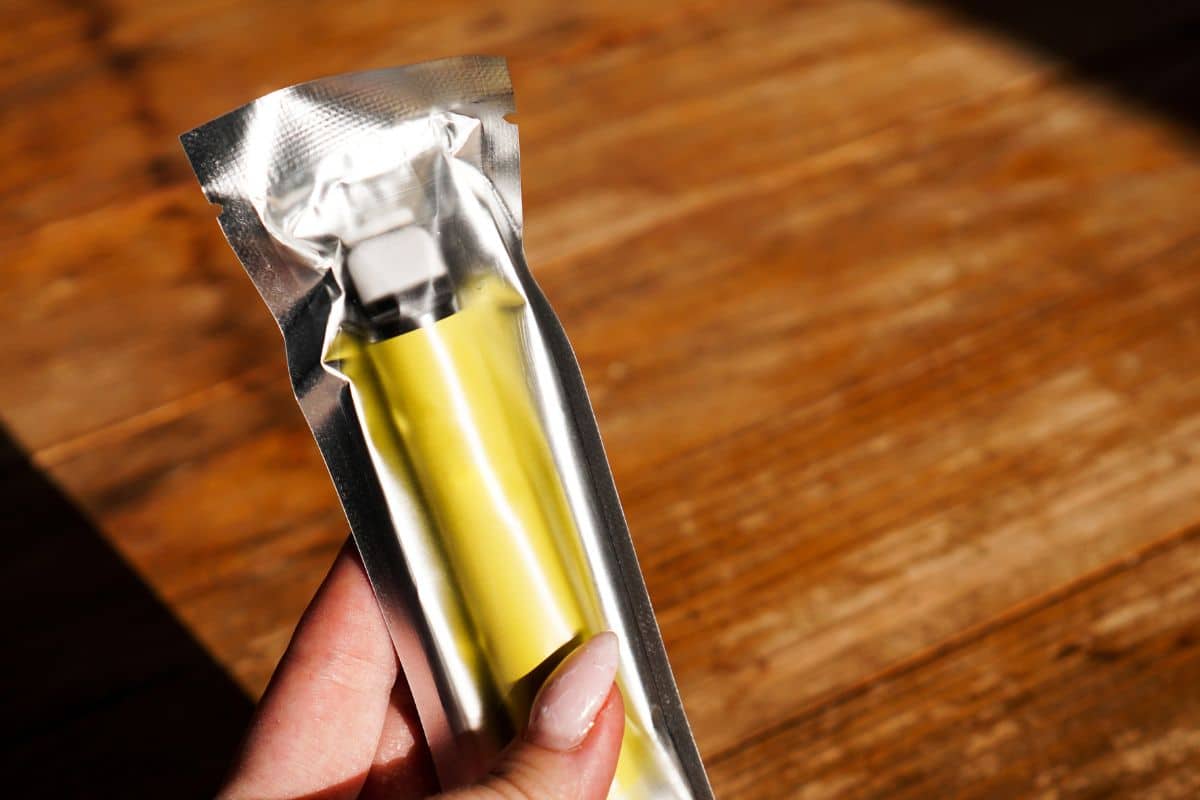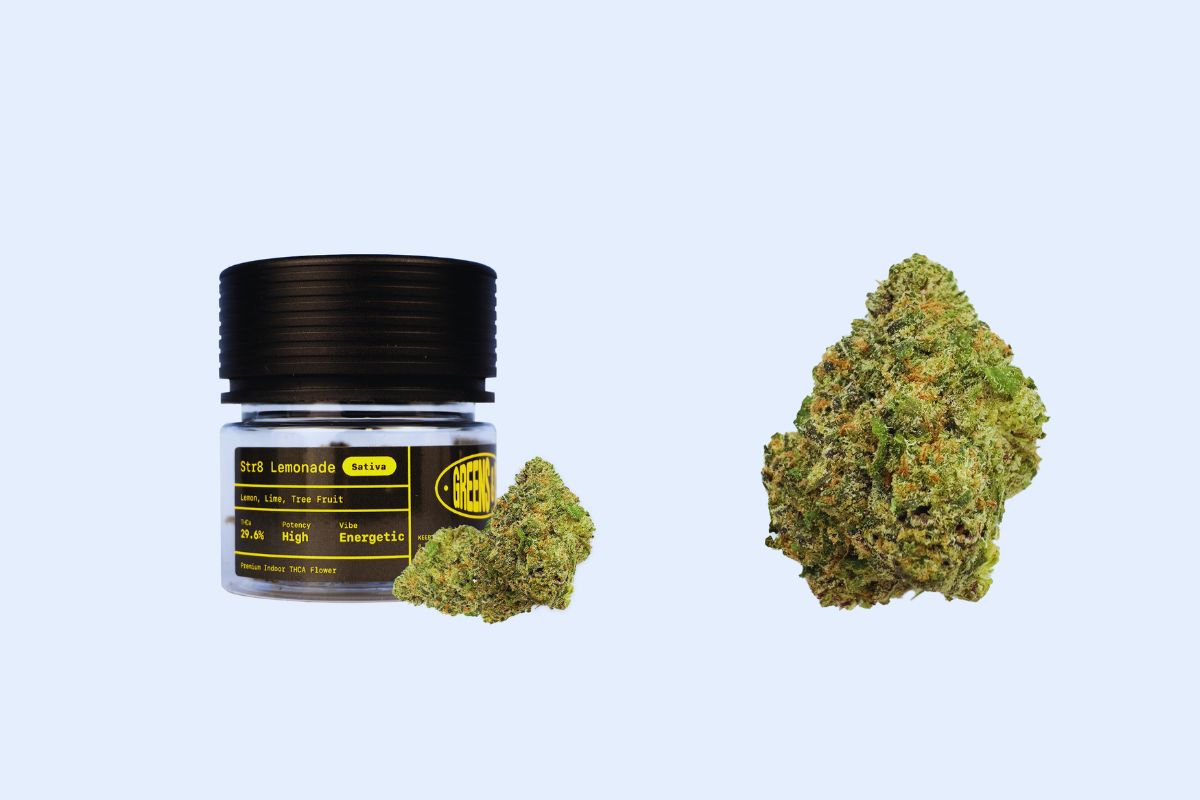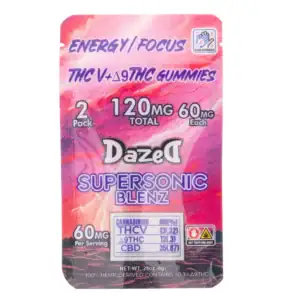How to Recycle Disposable Vapes: A Step-by-Step Guide
As an Earth enthusiast, I understand that disposable vapes don’t do our gorgeous world any favors. Convenient? Sure, but they pile onto our mounting tech waste issue. It’s time we wise up and properly recycle these gadgets to prevent them from becoming landfill fiends. Luckily, hidden recycling tricks exist that keep these vapes from morphing into eco-foes, and not everybody’s in on these secrets.
Table of contents
To start, I always recommend checking whether the manufacturer of the disposable vape offers a recycling program. Many do, and they often provide guidelines on how to prepare your device for recycling. This not only ensures that the vape is dealt with sustainably but sometimes also comes with incentives like discounts on future purchases. It’s a win-win for me and the planet.
Having learned the importance of separating electronic waste from regular trash, I ensure every part of the disposable vape that can be recycled is processed accordingly. This involves safely disassembling the device, where possible, and sorting its components. Batteries, in particular, need special attention due to their potential hazard, and I always take care to follow proper guidelines for their disposal. By taking these measures, I contribute to reducing harmful waste and promoting sustainable practices in vaping.
Understanding Disposable Vapes
When I talk about recycling disposable vapes, it’s critical to understand their construction, the environmental implications of their waste, and their lifespan. This will help me make more informed decisions about their disposal and recycling.
Components of a Disposable Vape
A disposable vape typically includes a battery, usually a non-rechargeable lithium type, which powers a vape coil that heats the e-liquid containing nicotine. The construction is largely plastic but contains metal elements and electronic components. Here is a breakdown of the parts found inside a typical disposable vape:
- Battery: A non-rechargeable lithium battery
- E-liquid: A mixture containing nicotine, flavorings, and a base (usually propylene glycol and vegetable glycerin)
- Vape coil: A heating element that vaporizes the e-liquid
- Materials: Predominantly plastic casing, along with metal for the coil and circuitry
Environmental Impact of Vape Waste
The waste from disposable vapes affects the environment significantly if not handled properly. The lithium batteries and electronic components can contribute to hazardous waste, while the plastic parts add to the non-biodegradable burdens in landfills. The impact is compounded by the volume of disposable vapes that end-users throw away.
Disposable Vape Lifespan
My experience shows that the lifespan of a disposable vape is limited. Designed for convenience, these devices are intended for short-term use, typically lasting until the battery dies or the e-liquid is depleted. The frequency at which users dispose of them is increasing, which magnifies the importance of proper recycling and disposal methods to mitigate environmental harm.
The Importance of Recycling Disposable Vapes

When I consider the environmental impact of disposable vapes, it becomes clear that recycling is a critical responsibility. These devices often end up in landfills, where they can persist for years, contributing to the growing problem of plastic waste. The batteries inside disposables are typically lithium batteries, which can pose significant risks as hazardous waste. If improperly discarded, the chemicals from these batteries may leach into the ground, contaminating soil and water.
I understand that it’s not just the batteries that are a concern. Disposable vapes also contain plastics and metals, which require energy and resources to produce. By recycling, I am not only diverting waste from landfills but also conserving resources and reducing the need for extraction of new materials. Below are the key components found in disposable vapes that necessitate proper recycling procedures:
- Batteries: Contain metals and chemicals like nickel, cadmium, and lithium.
- Plastic Waste: Includes pods and casings which take years to decompose.
- Metal Housings: Often made of steel or aluminum, both recyclable materials.
Recycling these components is an environmentally friendly practice. I take care to disassemble my disposable vapes and separate these parts, ensuring they are handled correctly. Such actions help minimize pollution, prevent potential health hazards, and support the sustainable use of valuable materials. Recycling is an empowering step towards reducing my ecological footprint and contributing to a more sustainable future.
Preparation for Recycling

Before recycling disposable vapes, I ensure that I safely drain all e-liquids, separate the different components, and carefully remove the battery. This process is essential for safe and effective recycling.
Safely Draining E-liquids
First, I identify if there is any leftover juice in the device. Next, I carefully remove the pod or opening and drain the e-liquid into an absorbent material such as cat litter or coffee grounds to prevent any leakage into the environment. It’s important not to rinse the liquid down the drain as it can be hazardous.
Separating Components
In disassembling the vape, I use tools like tweezers or small screwdrivers to take apart the different elements. I ensure to sort the components into plastics, metals, and electronic parts. Remember, not all parts may be recyclable through conventional means, and I check with my local services for guidance.
Battery Removal
For the battery, I locate its position within the vape and remove it with care to prevent any punctures or damage that could cause a fire hazard. I then take the batteries to a certified battery recycling center where they handle hazardous materials. Note, throwing batteries in the trash is unsafe and often illegal due to the risk of fire.
Recycling Processes for Disposable Vapes
| Recycling Process | Description |
|---|---|
| Collection | Used disposable vapes are collected from various sources, including designated drop-off points, recycling centers, or through specialized recycling programs. |
| Disassembly | Once collected, the disposable vapes are disassembled to separate components like the battery, plastic casing, and electronic circuitry. |
| Battery Extraction | Batteries are carefully removed from the vapes to prevent any leakage or environmental contamination. They are then sent for proper recycling or disposal. |
| Plastic Separation | Plastic components, such as the casing and mouthpiece, are sorted and separated for recycling. Depending on the type of plastic, they may be melted down and reused. |
| Metal Recovery | Metal parts, such as coils or connectors, are extracted and processed for metal recovery. These metals can be recycled and reused in various industrial applications. |
| Electronic Recycling | Electronic components like circuit boards are processed through specialized electronic waste recycling facilities to recover valuable metals and prevent environmental pollution. |
| Waste Management | Any remaining non-recyclable materials are disposed of properly, following regulations and guidelines to minimize environmental impact. |
When it comes to recycling disposable vapes, I ensure that I’m fully aware of the components that need special handling. The primary motive here is to prevent electronic waste and ensure environmentally responsible disposal. First, I separate the components of my disposable vape products, as vapors can contain batteries, e-liquids, and plastic or metal parts.
Manufacturer Recycling Programs:
I always check if the manufacturer of my disposable vapes offers a recycling program. Many leading manufacturers are willing to take back their products and recycle them responsibly. This often involves removing the battery and recycling the e-liquid containers.
Battery Disposal:
Since disposable vapes include batteries, they must not be thrown in the trash. I follow the guidelines set by the EPA when disposing of vape batteries. These are considered hazardous waste and typically, I would bring them to a designated battery recycling facility.
E-Liquid Containers:
The small containers that hold the e-liquid in vape products are usually made of plastic or glass, which can be recycled. Before recycling, I ensure that they are completely empty and clean.
Local Regulations:
In order to effectively recycle disposable vapes, I stay informed about my local recycling regulations. What can be recycled often varies by location, so I confirm what materials are accepted by my local recycling centers.
Addressing the Electronic Components:
Lastly, the electronic components of vape products need careful handling. I reach out to local electronic waste centers to ascertain the proper disposal methods for these items.
By following these detailed steps, I contribute to minimizing the impact of disposable vapes on the environment. It’s crucial to be thorough and ensure that each part of the vape is disposed of according to the right processes.
Local and National Recycling Resources

I’ll cover the various options available to recycle disposable vapes, focusing on established recycling centers, retailer initiatives, and online platforms that facilitate the proper disposal of these products.
Recycling Centers and Programs
Local recycling centers often accept electronic waste, and this can include disposable vapes. As they contain batteries, disposable vapes are classified as household hazardous waste (HHW) and should never be thrown in the regular trash. I recommend checking with Earth911 or using their online tool to find the nearest location that accepts e-waste or specifically disposable vapes.
- Local Recycling Centre: Use Earth911 to locate a center nearby.
- HHW Facilities: These places specifically handle products like vapes.
Retailer Recycling Initiatives
Some vape shops offer in-house recycling programs and can safely process disposable vapes. It’s worth checking with local vape shops to see if they have a recycling scheme in place. Retailers often partner with recycling programs or send the products back to the manufacturer for responsible disposal.
- Local Vape Shop: Inquire about recycling your disposable vape.
- Manufacturer Take-Back Programs: Participating shops may offer this service.
Online Recycling Platforms
There are online platforms that aggregate information on recycling various products, including vapes. They can direct you to the nearest recycling solution or mail-back program. Some manufacturers also host their own programs online, where you can download free shipping labels to send back used vapes for recycling.
- Earth911 Database: Provides extensive information on recycling options.
- Manufacturer Websites: May offer mail-back programs with incentives.
How to Reduce Disposable Vape Waste

In my comprehensive approach to minimizing vape waste, I focus on adopting sustainable practices and shifting towards more eco-friendly alternatives.
Switching to Rechargeable Kits
I often advocate for the use of rechargeable vape kits as one of the most effective ways to reduce waste. These kits come with a rechargeable battery and a vape tank which can be refilled and reused multiple times. By investing in a quality rechargeable kit, I minimize my environmental footprint by reducing the need for single-use disposables.
Vape Waste Reduction Practices
Vape Waste Reduction Practices encompass a set of behaviors aimed at decreasing the quantity of waste generated by vaping products. This includes:
- Properly disposing of disposable vapes by recycling components where facilities exist.
- Separating parts: I disassemble my vape pens, removing batteries for e-waste recycling, and ensure that the plastic casing is clean before recycling.
Responsible Vaping Habits
When I discuss Responsible Vaping Habits, I’m referring to:
- Choosing eco-friendly products, such as those with minimal packaging.
- Reusing elements like vape tanks when possible rather than opting for disposables.
By implementing these practices, I play my part in reducing disposable vape waste, promoting an eco-friendly vaping culture, and leading a more sustainable lifestyle.
Legal and Safety Considerations

In my extensive review of disposable vape recycling, I’ve come to understand the significance of complying with legal frameworks, while also ensuring the safety of individuals and sanitation workers. It’s crucial to navigate the disposal regulations and adopt practices that prevent fires and accidents.
Disposal Regulations
Various regions enforce specific regulations regarding the disposal of electronic waste, which typically include disposable vapes. These regulations are in place to prevent environmental damage and to promote recycling. For instance, it’s important to know that simply throwing vapes in the trash might be illegal in some areas due to the toxic substances they contain.
Key Points:
- Check local e-waste regulations for proper disposal.
- Never dispose of vapes in regular trash or recycling bins if prohibited.
Preventing Fires and Accidents
The lithium batteries within disposable vapes pose a significant fire hazard if not handled correctly. To prevent accidents that could harm me or sanitation workers, it is essential to:
- Drain the battery completely to avoid any charge that could cause a spark.
- Separate the battery from the plastic components.
- Do not cut the wires or try to piece the battery, as it could lead to a dangerous reaction.
By adhering to these measures, we can ensure the safety of all parties involved and maintain a responsible recycling process.
Advocacy and Future of Vaping Sustainability

As someone deeply concerned about the vaping industry’s environmental footprint, I have been monitoring the strides made toward sustainable vaping. The escalating waste from disposable vapes is undeniable, but with my advocacy and developments in the sector, there’s a clear path to a more sustainable future.
Vaping Experience & Sustainability: I’ve noticed that the vaping community is increasingly aware that their choices can impact the environment. Enthusiasts and manufacturers alike are looking towards creating a smokybox—a hypothetical concept for a closed-loop system. This system might include biodegradable materials or recycling programs to minimize waste.
The environmental impact of vaping, particularly from disposable vapes, stems from their lithium batteries and electronic components. Through advocating for recycling programs and supporting brands that prioritize sustainability, I believe we can significantly reduce this impact.
Moreover, while vaping is often cited as a healthier alternative to traditional smoking, the focus on health should extend to our planet’s well-being. To this end, manufacturers are beginning to recognize the necessity for change. A shift towards reusable devices, recycling initiatives, and consumer education are all important steps that can be taken.
Environmental Impact & Smokybox: As I engage with various stakeholders, I push for innovations such as the smokybox, which would ensure that vapes have a negligible impact on the environment. I champion for these steps to be taken:
- Education on proper disposal
- Incentives for recycling used devices
- Cooperation with regulatory bodies to establish guidelines
By maintaining a confident, knowledgeable, neutral, and clear tone in my advocacy, I aim to influence both consumers and manufacturers to consider the longevity of vaping and its potential for sustainability.
Frequently Asked Questions
In this section, I address some of the common queries regarding the recycling of disposable vape pens, ensuring that you have the necessary information to handle them responsibly.
What are the best methods for recycling disposable vape pens?
The most effective method for recycling disposable vape pens involves separating their components. Batteries should be disposed of at a battery recycling center, while plastic parts can often be recycled in standard recycling bins if they’re cleaned of any hazardous materials.
Are there specific companies that specialize in vape recycling?
Yes, some companies and manufacturers offer specific recycling programs for disposable vape products. I recommend checking with the manufacturer of your vape pen, as they may provide mail-back programs or drop-off locations for recycling.
Is it possible to recycle disposable vapes for a monetary reward?
It’s rare to find monetary incentives for recycling disposable vapes. However, some manufacturers may offer discounts on future purchases or other benefits for participating in their recycling programs.
What is the proper way to dispose of Elf Bars?
To properly dispose of Elf Bars, you should first deplete the battery and remove the e-liquid. Contact your local waste management to find out specific disposal guidelines for electronics and hazardous waste in your area.
How should one handle the disposal of expired or old disposable vapes?
Expired or old disposable vapes should be handled with care. The battery should be completely used up and then taken to an appropriate facility that manages electric waste. Remaining components may have to be disposed of according to your locality’s hazardous waste policies.
Where can I find local vape recycling facilities?
To find local vape recycling facilities, start by consulting your city or municipality’s waste management department. They can provide information on e-waste programs and centers that accept disposable vape pens. You can also contact vape product manufacturers or look for local retailers that offer recycling services.










